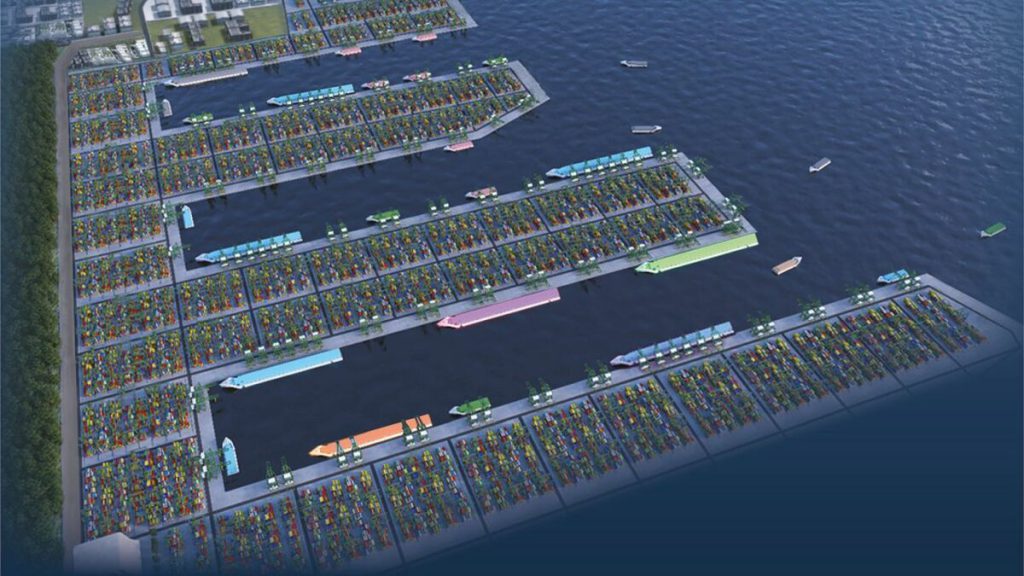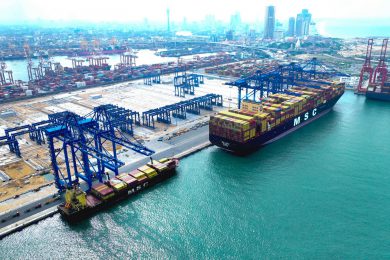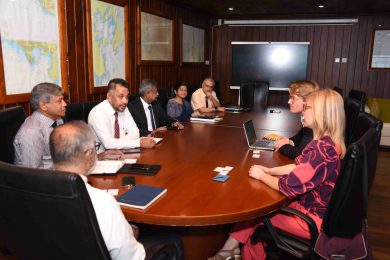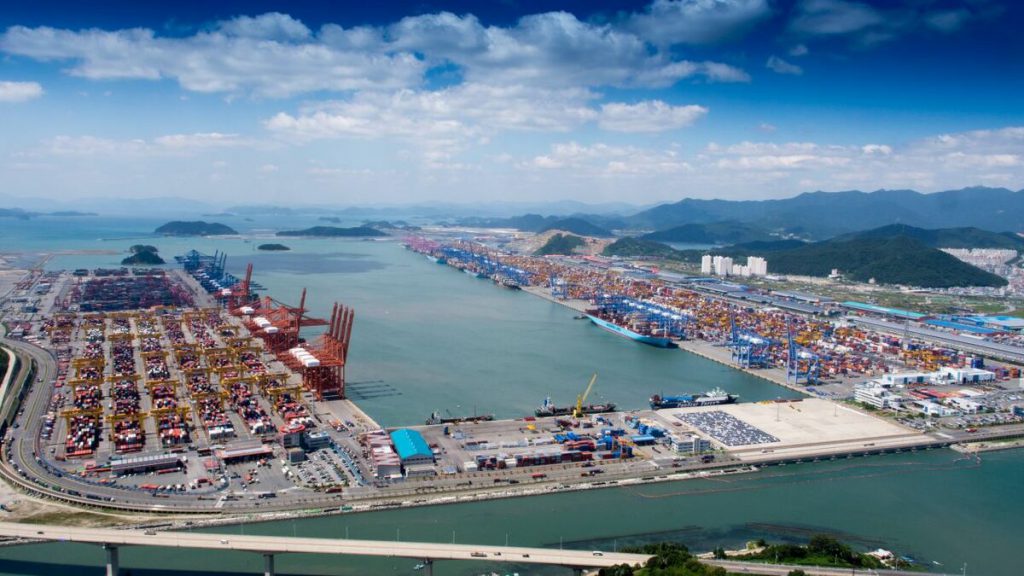Large port construction and development programmes across Asia will boost terminal facilities for container ship operators
by Rebecca Moore
Governments throughout the region are helping to fund new ports and terminals for container cargoes and building logistics hubs.
Chinese authorities released plans in November 2019 to accelerate its programme of constructing world-class ports incorporating smart management and operational technologies.
Guidelines released from nine government agencies including the Ministry of Transport and the National Development and Reform Commission, Ministry of Finance and Ministry of Natural Resources demonstrate China’s aims for more smart and green port hubs by 2025.
Authorities intend to advance ports to world-class levels by 2035 and to have numerous world-class port clusters in service in 2050.
Infrastructure and harbour construction will extend and upgrade existing terminals and ports, increasing capacity of many already in the top 20 for container traffic.
China has seven of the world’s top 10 container ports by TEU trade, with Shanghai the largest, followed by Ningbo, Shenzhen, Guangzhou, Qingdao, Tianjin and Hong Kong, plus Xiamen and Dalian in the top 20. This demonstrates the scale of development to date and the impact on tug service demand.
Future of Singapore
Container port giant Singapore remained the world’s second-largest container port in 2018, with 36.6M TEU, up a solid 8.7%. PSA Singapore has boosted its use of big data and built partnerships with container shipping lines. It has formed a joint venture terminal with Ocean Network Express and CMA CGM’s Ze Box and PSA unboXed have signed a memorandum of understanding to work on digitalisation projects. Ze Box is CMA CGM’s corporate venture capital arm that invests in start-ups with innovations that bring strategic value to the CMA CGM Group, while PSA unboXed is PSA International’s external innovation and corporate venture capital arm.
PSA celebrated a milestone in October last year when the Prime Minister of Singapore, Lee Hsien Loong, placed a torch on the grounds of Tuas Port to symbolise the start of the new terminal.
PSA says Tuas Port represents the “future of the Singapore transhipment hub”. With 26 km of deepwater berths (up to 23 m deep), and capable of handling TEU annually, Tuas Port is designed to meet and exceed the future demands of the container ship sector.
Tuas Port incorporates innovations such as an intelligent data-driven operations management systems, wharf and yard automation, full-electric automated guided vehicles, smart engineering and power management platforms.

To be developed in four phases, Tuas Port’s first berths are scheduled to commence operations in 2021. When completed in 2040, Tuas Port is anticipated to be the world’s single largest fully automated terminal in the world.
Beyond container handling capabilities, Tuas Port will also be a “key nucleus and multiplier of a wider Tuas ecosystem”. A statement adds “Comprising synergistic industries and supply chain nodes interlinked by a seamless mesh of physical and digital connections, the Tuas ecosystem is poised to orchestrate creative supply chain solutions to further the connectivity of Singapore’s future economy.”
PSA International group chairman Peter Voser says “Tuas is an opportunity for us to reinvigorate and reimagine. By venturing beyond the physical port into complementary logistics capabilities and integrated digital systems, PSA will take the lead in transforming the industry to better deliver holistic cargo solutions for our customers and promote greater supply chain efficiency. The integrated Tuas ecosystem sets the stage for Singapore to not only consolidate our position as the world’s largest transhipment hub, but also reinvent ourselves as a leading global supply chain and logistics centre.”
Busan transhipment ambition
South Korea’s Government, with private funding, plans to invest more than US$35Bn in up to 12 ports in the next 20 years to increase ship-handling capacity. This investment could make Busan the world’s third-largest port by 2040 with capacity to handle 25,000-TEU container ships. Investment could increase national cargo trade from 1.32Bn tonnes in 2017 to 1.85Bn tonnes.
Indeed, Busan Port recorded the highest throughput in its history by handling 21.6M TEU as of 2018. It is expected to record a throughput of 21.9M TEU in 2019. Busan Port Authority (BPA) president and chief executive Kichan Nam says this is despite the “decrease in international trade due to various negative external factors, such as the global economic slowdown and US-China trade dispute”.
He says BPA will achieve its target by improving efficiency in New Port and integrating terminal operators in North Port. “As the global maritime environment is changing rapidly and the competition among ports grows, the Authority will swiftly respond
to the changes in port trends and the maritime environment to strengthen its competitiveness, taking a step further to become a global logistics hub port,” he says.
Homing in on transhipment, he points out that while Busan Port is “relatively competitive in terms of unloading fees, port fees, and transhipment time when compared with its neighbouring ports”, it is still considered to have a cost issue for handling transhipment at other piers due to a high number of terminal operators.
As the largest transhipment hub port in northeast Asia, the port aims to improve its transhipment competitiveness. Mr Nam says “In the short term, such efforts not only need the continued marketing towards shipping companies, but also strengthening terminal efficiency by improving transhipment at other piers and berths. In the middle-to-long term, it is necessary to integrate terminal operators to improve the port’s general efficiency.”
The Busan New Port development is ongoing and the North container terminal and South container terminal are under development. The West container terminal is also being developed. Three berths for Phase 2-5 that can accommodate 20,000 TEU vessels are under construction to be completed by 2021. Two berths for Phase 2-6 are slated to be completed by 2025.
The Ministry of Oceans and Fisheries is proceeding with a contract to incorporate the Second New Port Development into the Fourth Port Basic Plan. When the second New Port is developed, 21 additional berths will be established, giving the Port 45 berths and a throughput of 30M TEU. The port says this will contribute to strengthening its position as a port handling 98% of domestic transhipment cargoes and as the second-largest global transhipment port.
Mr Nam adds “Busan Port is seeing growth in transhipment volumes, however, uncertainties are also rapidly increasing due to the IMO 2020 environmental regulation, digitalisation of the maritime and port industries, changing global economy, the US-China trade dispute, and changing alliances and networks of shipping companies”.
South Asia upgrades
Elsewhere, in the Philippines, two commercial port complexes may be upgraded for container ship traffic. International Container Terminal Services has proposed modernising the Iloilo commercial port complex and the Port of Dumangas. These proposals are being considered by the Philippine Ports Authority and the National Economic and Development Authority. This could lead to an upgraded network of ports in the country.
In Indonesia, DP World is constructing a US$1.2Bn container port and industrial logistics park in East Java. Maspion container port will be built in Gresik with 3M TEU capacity ready to open in 2022.
In Sri Lanka, container terminals will be developed in the Port of Colombo. This will begin with East Container Terminal and will be followed by West Container Terminal part 1 and 2 and the South Asia Gateway Terminal will be expanded. Former secretary to the Sri Lank’s Ministry of Ports and Shipping Sirimevan Ranasinghe said this should expand the capacity of Port of Colombo to 35M TEU. There will also be further investment in Hambantota Port and Trincomalee Port in the future.
Source: www.rivieramm.com























